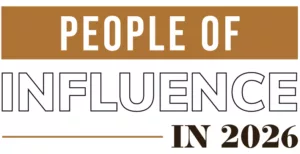
Home » Health plan offerings grow in Idaho
Health plan offerings grow in Idaho
Labor department survey shows coverage increase for first time since 2002
March 1, 2012
Idaho employers reversed an eight-year decline in workplace health care coverage in 2011 despite the financial pressures of coming out of the worst recession since World War II.
The Idaho Department of Labor's 2011 Fringe Benefit Survey found that 66 percent of employers offered individual health insurance to full-time workers, and 61 percent offered coverage to the families of those workers.
That's 10 percentage points higher than the 2009 survey findings for worker coverage and eight points higher for family coverage.
But while the totals showed an end to the decline in workplace health care coverage, the totals fall short of 2002 when 82 percent of employers said they provided worker coverage, and 62 percent offered family coverage.
Coverage offered to part-time workers was essentially unchanged from 2009.
More than 900 randomly selected employers representing the spectrum of size, geographic location, and industry sector responded to the survey conducted last August and September. The results on a statewide basis have a margin of error of plus or minus three percentage points.
The survey found similar increases in the percentage of employers offering dental coverage to their workers, but there was little change in the availability to workers of pension plans or paid leave in the form of vacation, sick days, or holidays.
The overall increase in the availability of health insurance in the workplace was seen among all payroll sizes from employers with fewer than 10 workers to those with more than 250.
Regionally, the availability of health insurance for workers rose from 2009 except in eastern Idaho, where it remained unchanged at 55 percent.
That was also the smallest percentage of employers to offer workers health coverage of any region. Family coverage also went up regionally, except in south central Idaho where it was unchanged at 47 percent and eastern Idaho, where it dropped from 53 percent to 51 percent.
The trend was essentially the same among industries with the exception of mining and natural resources, where the availability of worker coverage dropped from 67 percent to 27 percent and family coverage from 58 percent to 27 percent.
Professional and business services employers offering family coverage dropped from 59 percent to 52 percent.
The survey found that eight of every 10 workers offered medical coverage took it, and four of every 10 added their family to the coverage when they could. Part of the reason for the drop-off could be that employers on average paid 84 percent of the premium for worker health care coverage, but only 39 percent of the premium for family coverage.
Those percentages varied slightly by size of the business payroll, although the largest companies—those with more than 250 workers—paid an average of 63 percent of the family premium.
Latest News
Related Articles


_web.webp?t=1764835652)
